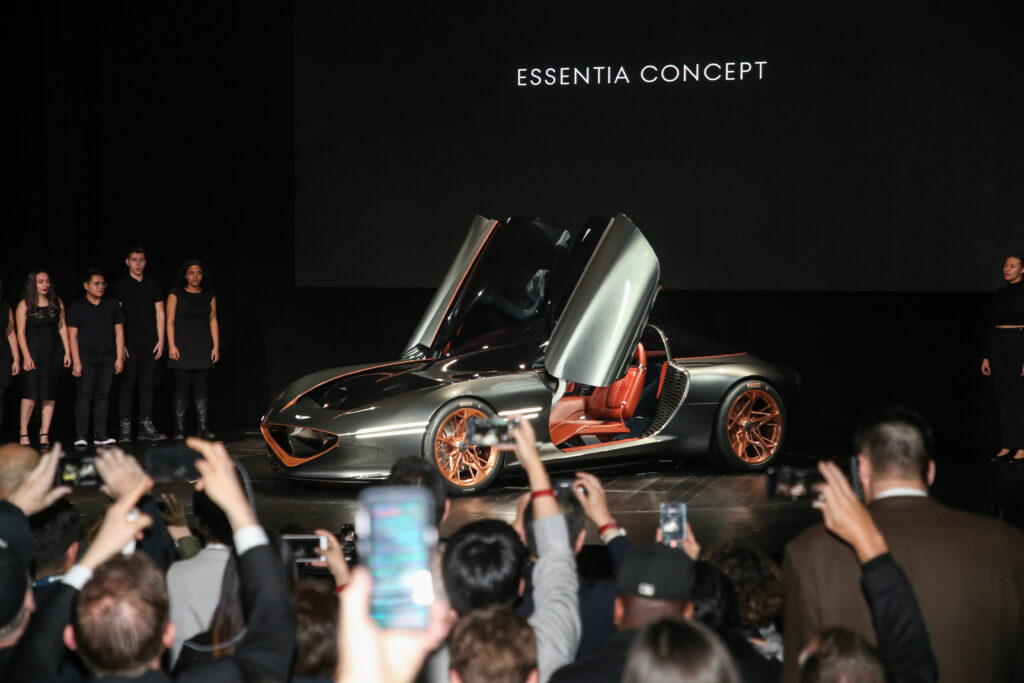
New York’s Most Daring Concept Cars Since 1900
FANTASY TO FUTURE: New York’s Most Daring Concept Cars Since 1900
Since the early 1900s, New York City has been the ultimate stage for unveiling some of the most daring and imaginative concept cars in automotive history. From custom-built luxury cars of the 1920s to post-war, jet-inspired designs, the New York Auto Show has always embraced the experimental spirit. This timeline takes you on a journey through these iconic reveals, showcasing how concept cars have not only captivated audiences but redefined the future of driving.
 1900s–1920s: Early Innovation and Custom Vehicles
1900s–1920s: Early Innovation and Custom Vehicles
- 1900: The first New York Auto Show, held at Madison Square Garden, showcased horseless carriages and early motor vehicles. While not concept cars as we think of them today, this event sparked public interest in automobile innovation.
- 1920s: During this period, custom-built luxury cars like the Duesenberg Model A and the Stutz Bearcat began appearing. Manufacturers emphasized custom features rather than full concept designs, laying the groundwork for more experimental cars in future decades.
1930s–1940s: Experimental Streamlining
- 1938: Chrysler’s Thunderbolt debuted as one of the earliest examples of streamlined car design. With its sleek, airplane-inspired body, it was a groundbreaking design that set the tone for future concept cars.
1950s: Post-War Futurism
- 1954: The Ford FX-Atmos concept, showcased with a bubble canopy and jet-inspired styling, reflected the space-age fascination of the time.
- 1956: General Motors’ Firebird II concept, with a gas turbine engine and futuristic look, was a crowd-puller. The New York Auto Show was a major venue for these kinds of designs during the ’50s.
1960s: Radical Ideas and Muscle Car Concepts
- 1964: Ford unveiled the Mustang I concept in New York. This concept paved the way for the production Ford Mustang, which became an instant hit and defined the muscle car era.
- 1968: AMC debuted the AMX GT concept, a sporty, compact car that combined American muscle with European styling influences.
1970s: Emphasis on Compact and Fuel-Efficient Designs
- 1977: The Ford Fiesta Fantasy concept appeared, previewing the trend of small, fuel-efficient vehicles as a response to the 1970s fuel crises.
- 1979: Toyota’s FX-1 concept was introduced, highlighting early Japanese concept cars focused on efficiency and practical design.
1980s: Technology and Performance
- 1983: The Chrysler Portofino concept, shown in New York, featured advanced aerodynamics and showcased a sleek, modern aesthetic.
- 1988: The Pontiac Banshee IV concept with its lightweight construction and high-tech dashboard showed Pontiac’s vision for a performance-focused, tech-laden sports car.
1990s: Going Bold with Design and Technology
- 1993: Ford revealed the Mustang Mach III concept in New York, hinting at future Mustang styling.
- 1997: The Dodge Copperhead concept was introduced, showcasing a roadster with sporty, aggressive lines, cementing Dodge’s performance image.
 2000s: Sustainability and Hybrid Powertrains
2000s: Sustainability and Hybrid Powertrains
- 2002: The Ford Model U concept, introduced in New York, was designed to be eco-friendly, featuring a hydrogen-powered internal combustion engine.
- 2008: Chevrolet’s Volt concept car made an appearance, symbolizing a significant step towards electrification and setting the foundation for Chevrolet’s electric vehicle lineup.
2010s: Electric and Autonomous Technologies
- 2012: The Nissan NV200 Taxi of Tomorrow was presented as New York City’s future taxi, focusing on functionality and comfort for the urban environment.
- 2018: The Genesis Essentia concept, a fully electric luxury sports car, wowed crowds with its futuristic, minimalist design and advanced electric powertrain.
2020s: Pushing the Limits of EV Design
- 2022: The Ford Mustang Mach-E GT Performance Edition was shown in New York, marking a blend of classic Mustang muscle with cutting-edge electric power.
- 2023: Hyundai’s N Vision 74 concept debuted, drawing from classic designs while focusing on hydrogen fuel cell technology for a sustainable future.